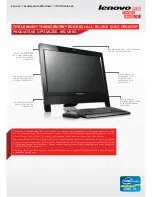
14
Kaspersky Anti-Virus 7.0
word-cracking programs, and other types of programs for cracking network
resources or penetrating a system.
Kaspersky Anti-Virus uses two methods for detecting and blocking these threat
types:
Reactive:
it is a method designed to search for malicious objects using
continuously updating application databases. This method requires at
least one instance of infection to add the threat signature to the data-
bases and to distribute a database update.
Proactive
– in contrast to reactive protection, this method is based not
on analyzing the object‟s code but on analyzing its behavior in the sys-
tem. This method is aimed at detecting new threats that are still not de-
fined in the signatures.
By employing both methods, Kaspersky Anti-Virus provides comprehensive pro-
tection for your computer from both known and new threats.
Warning!
From this point forward, we will use the term "virus" to refer to malicious and
dangerous programs. The type of malicious programs will only be emphasized
where necessary.
1.4.
Signs of Infection
There are a number of signs that a computer is infected. The following events
are good indicators that a computer is infected with a virus:
Unexpected messages or images appear on your screen or you hear
unusual sounds;
The CD/DVD-ROM tray opens and closes unexpectedly;
The computer arbitrarily launches a program without your assistance;
Warnings pop up on the screen about a program attempting to access
the Internet, even though you initiated no such action;
There are also several typical traits of a virus infection through email:
Friends or acquaintances tell you about messages from you that you
never sent;
Your inbox houses a large number of messages without return ad-
dresses or headers.















































